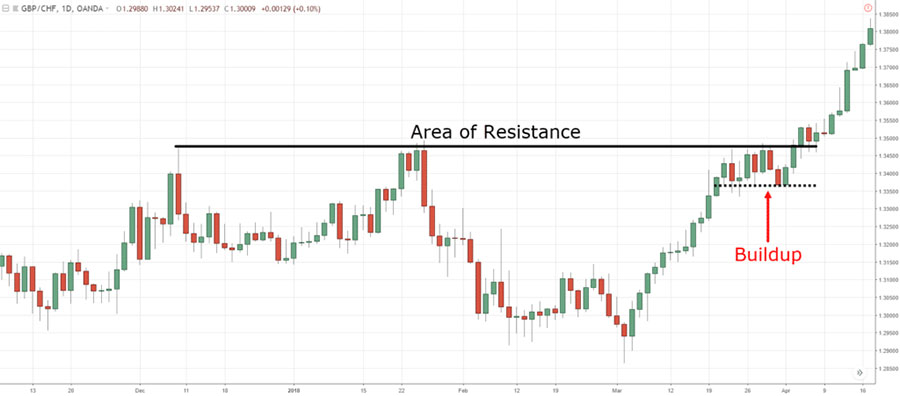A bull trap is a false signal, referring to a declining trend in a stock, index, or other security that reverses after a convincing rally and breaks a prior support level. The move “traps” traders or investors that acted on the buy signal and generates losses on resulting long positions. A bull trap may also refer to a whipsaw pattern.
Understanding a Bull Trap
A bull trap occurs when a trader or investor buys a security that breaks out above a resistance level—a common technical analysis-based strategy. While many breakouts are followed by strong moves higher, the security may quickly reverse direction. These are known as “bull traps” because traders and investors who bought the breakout are “trapped” in the trade.
Traders and investors can avoid bull traps by looking for confirmations following a breakout. For example, a trader may look for higher than average volume and bullish candlesticks following a breakout to confirm that price is likely to move higher. A breakout that generates low volume and indecisive candlesticks—such as a doji star—could be a sign of a bull trap.
Stay in the know on crypto by frequently visiting Crypto News Today
From a psychological standpoint, bull traps occur when bulls fail to support a rally above a breakout level, which could be due to a lack of momentum and/or profit-taking. Bears may jump on the opportunity to sell the security if they see divergences, dropping prices below resistance levels, which can then trigger stop-loss orders.
The best way to handle bull traps is to recognize warning signs ahead of time, such as low volume breakouts, and exit the trade as quickly as possible if a bull trap is suspected. Stop-loss orders can be helpful in these circumstances, especially if the market is moving quickly, to avoid letting emotion drive decision-making.
Example of a Bull Trap
In this example, the security sells off and hits a new 52-week low before rebounding sharply on high volume and lifting into trendline resistance. Many traders and investors jump on to the move, anticipating a breakout above trendline resistance but the security reverses at resistance and turns sharply lower from these levels. New bulls get trapped in long trades and incur rapid losses, unless aggressive risk management techniques are undertaken.
The trader or investor could have avoided the bull trap by waiting for a breakout to unfold before purchasing the security, or at least mitigated losses by setting a tight stop-loss order just below the breakout level. Read More at INVESTOPEDIA![]()
Please Read Essential Disclaimer Information Here.
© 2024 Crypto Caster provides information. CryptoCaster.world does not provide investment advice. Do your research before taking a market position on the purchase of cryptocurrency and other asset classes. Past performance of any asset is not indicative of future results. All rights reserved.
Contribute to CryptoCaster℠ Via Metamask or favorite wallet. Send Coin/Token to Addresses Provided Below.
Thank you!
BTC – bc1qgdnd752esyl4jv6nhz3ypuzwa6wav9wuzaeg9g
ETH – 0x7D8D76E60bFF59c5295Aa1b39D651f6735D6413D
MATIC – 0x7D8D76E60bFF59c5295Aa1b39D651f6735D6413D
LITECOIN – ltc1qxsgp5fykl0007hnwgl93zr9vngwd2jxwlddvqt






